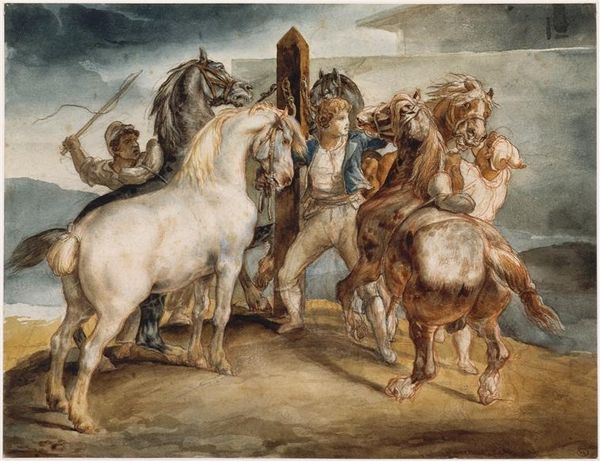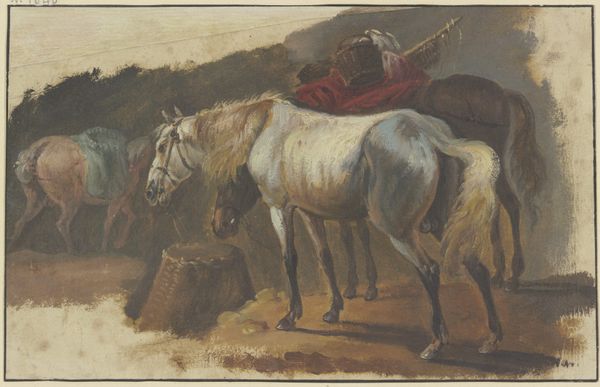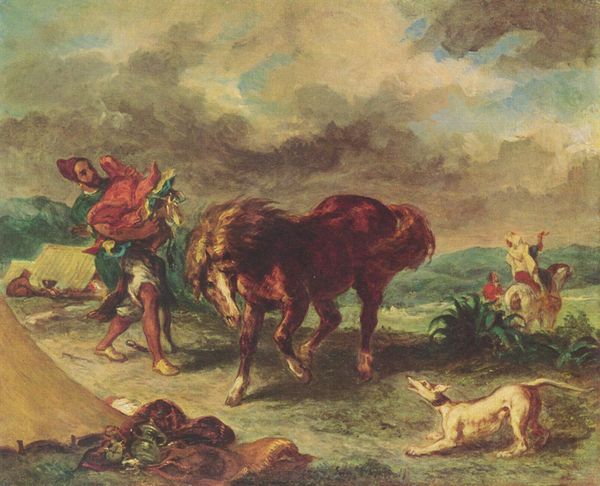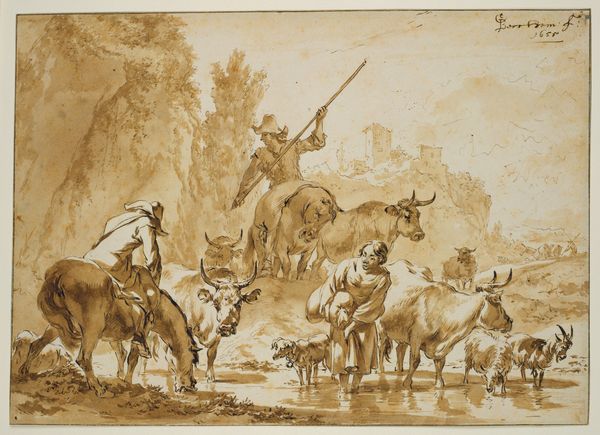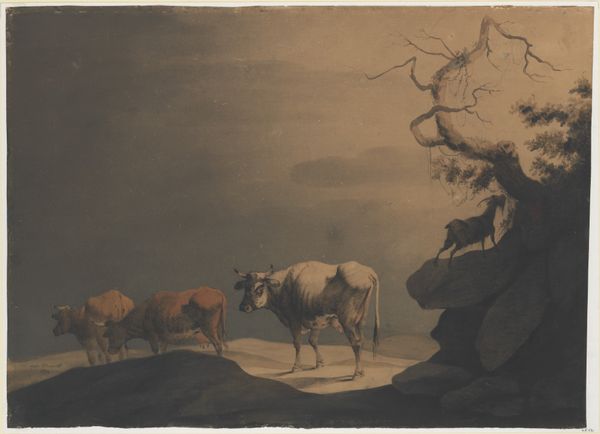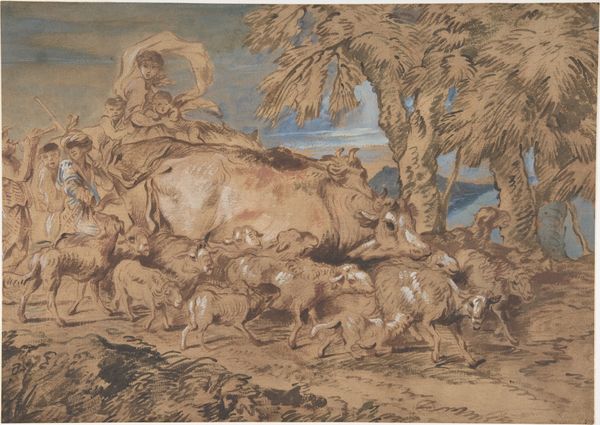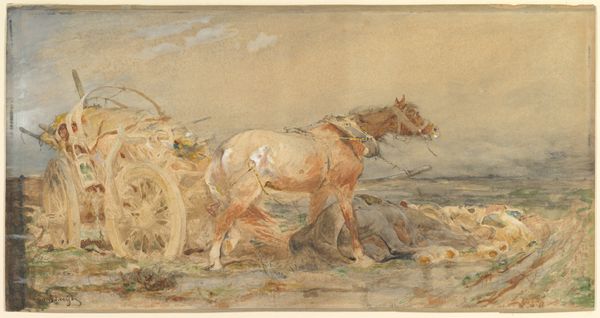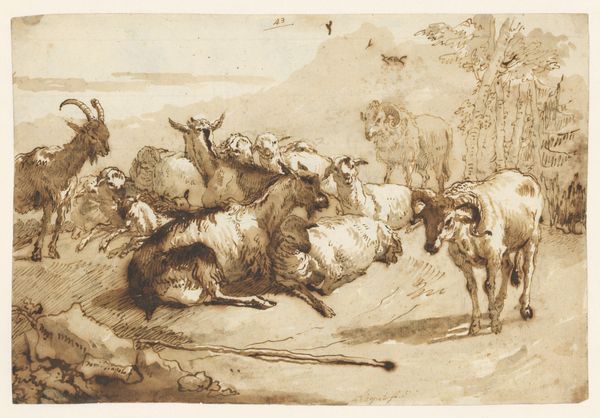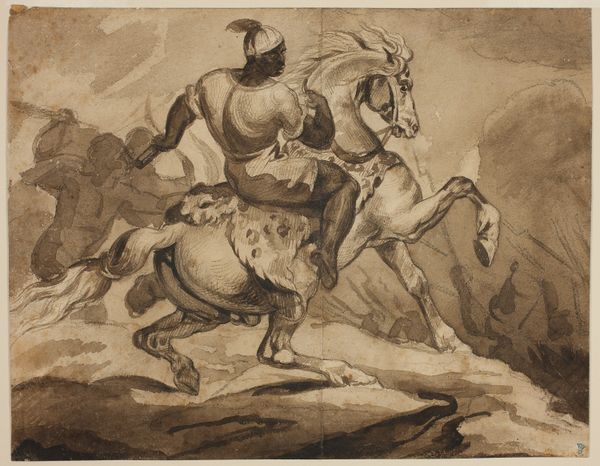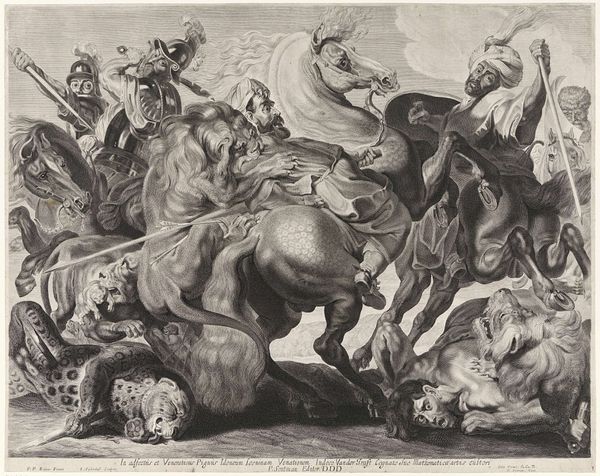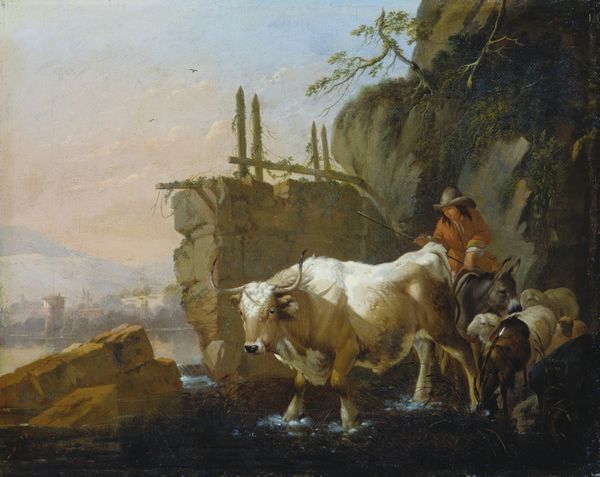
watercolor
#
narrative-art
#
animal
#
charcoal drawing
#
figuration
#
charcoal art
#
oil painting
#
watercolor
#
romanticism
#
watercolour illustration
Copyright: Public Domain: Artvee
Curator: At first glance, it's a swirling mass of energy, almost chaotic, rendered in muted browns and greys, like a half-remembered dream. A moment of sheer animal intensity. Editor: What grabs me about Théodore Géricault's "Fighting Horses", from around 1820, is how it reflects a real shift happening in artistic sensibilities, you see, this pivot away from idealized, Neoclassical forms to something more raw and emotionally charged, this is Romanticism, after all! Curator: Oh, absolutely. There's nothing poised or elegant here. It's pure, unbridled instinct. I'm particularly drawn to the one with its back to us—the way its legs are braced, the tension in its haunches. You can almost feel the ground trembling beneath its hooves. There’s so much visceral emotion on display! Editor: Indeed. It's thought Géricault made many such watercolors of horses as preliminary studies—explorations—leading up to larger compositions and more detailed work like the "Epsom Derby." Think of it this way: How could the representation of such equine dramas comment upon broader political upheavals of the 19th Century? Curator: That’s intriguing... there's an almost violent energy, this pent-up tension reminds me of the human conflicts during that time, those revolutionary tremors. But beyond the possible allegorical interpretation, there’s also simply the beauty of it all, the subtle blending of washes and dry brush strokes giving the horses such dynamic textures, an almost tactile quality, isn't it just beautiful? Editor: It’s interesting that you highlight the surface of this watercolor, since Géricault often pushed artistic boundaries. We know that he used live models as a way of studying human and animal anatomy—radical moves at the time. The "Epsom Derby" demonstrates a clear tension between the artist, the subject matter and a conservative Salon. Curator: Well, looking closer now, I do see it – that desire to accurately record movement, musculature… He’s capturing a fleeting instant of drama with real intent, those studies, that observation definitely served a purpose here. Editor: Precisely, to understand Géricault’s artistic world one must grasp how intertwined painting and politics truly are. Even pictures of horses in watercolors. Curator: Who knew an art piece of fighting horses could inspire such contemplation? Thanks for sharing your historical perspective! Editor: And thank you for your artistic impressions—it gives us plenty to ponder!
Comments
No comments
Be the first to comment and join the conversation on the ultimate creative platform.
